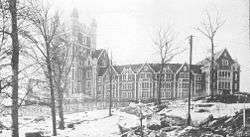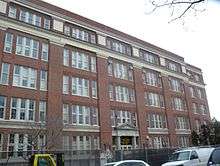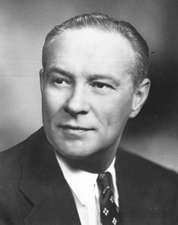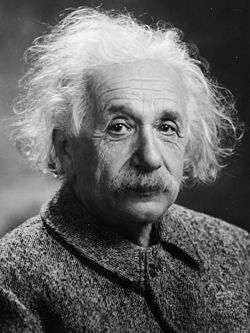William Frauenglass
William Frauenglass was a high-school teacher to whom Albert Einstein wrote a letter on academic freedom, published in the New York Times and much publicized at the time.[1][2][3]

Background

In 1928, Frauenglass obtained a BA in social science from the City College of New York. In 1952, he obtained a degree from New York University.
Career

Frauenglass became an English teacher at the James Madison High School in Brooklyn, New York. He was a member of the Teachers' Union Local 5 of the American Federation of Teachers, of which he is proud.[1]
1953 testimony

On April 24, 1953, attorney Joseph Forer (member of the Washington, DC, chapter of the National Lawyers Guild) represented Frauenglass when he appeared under subpoena before the United States Senate Subcommittee on Internal Security. The subcommittee's interest lay in Frauenglass's participation in a class led by one Louis Relin in April 1947.[1]
Frauenglass described for them:
Well, I was invited to speak, I was invited to give a lecture in the field of English literature. I have been active in the English Teachers Committee on Intercultural Education and also in my school, trying to carry into effect the program which the board of education was then interested in. the Springfield plan of introducing intercultural education into the school.
In my school when the first alertness course was given by the board of education in that field and the principal asked for somebody to volunteer to take part, I volunteered for the very first course, I think, given under the auspices of Mrs. Dubois at Textile High School, and I became in tensely interested in the subject and volunteered and was commended by the chairman of my department for introducing cultural activity into that field[1]
Frauenglass pled the Fifth whenever asked about affiliations with the Communist Party USA.[1]
Einstein letter

On May 16, 1953, world-famous scientist Albert Einstein wrote Frauenglass a letter,[4] which the New York Times published on June 12, 1953. (Einstein had added a postscript stating the letter "need not remain confidential"). In the letter, Einstein had advised (reported the Times) that "every intellectual called before a Congressional investigating committee should refuse to testify, and 'must be prepared for jail and economic ruin, in short, for the sacrifice of his personal welfare in the interest of the cultural welfare of his country'."[2]
(During those hearings, Bella Dodd, former member of the Teachers' Union, testified about its communist infiltration and named Dale Zysman as a prominent communist within the union.[5][6])
Frauenglass did refuse to testify further – and he did lose his job.[3]
See also
References
- Subversive Influence in the Educational Process. US GPO. 1953. pp. 838–841. Retrieved 3 September 2018.
- Buder, Leonard (12 June 1953). "Refuse to Testify,' Einstein Advises Intellectuals Called In by Congress". New York Times. Retrieved 3 September 2018.
- "Einstein, Plumbers, and McCarthyism". Institute for Advanced Study. 2017. Retrieved 3 September 2018.
- "Einstein to William Frauenglass". Einstein Virtuell. Retrieved 3 September 2018.
- Klehr, Harvey (1984). The Heyday of American Communism: The Depression Decade. New York: Basic Books. p. 378. ISBN 0-465-02945-0. OCLC 10456780.
- Dodd, Bella Visono (1954). School of Darkness. New York: P. J. Kenedy. p. 96.